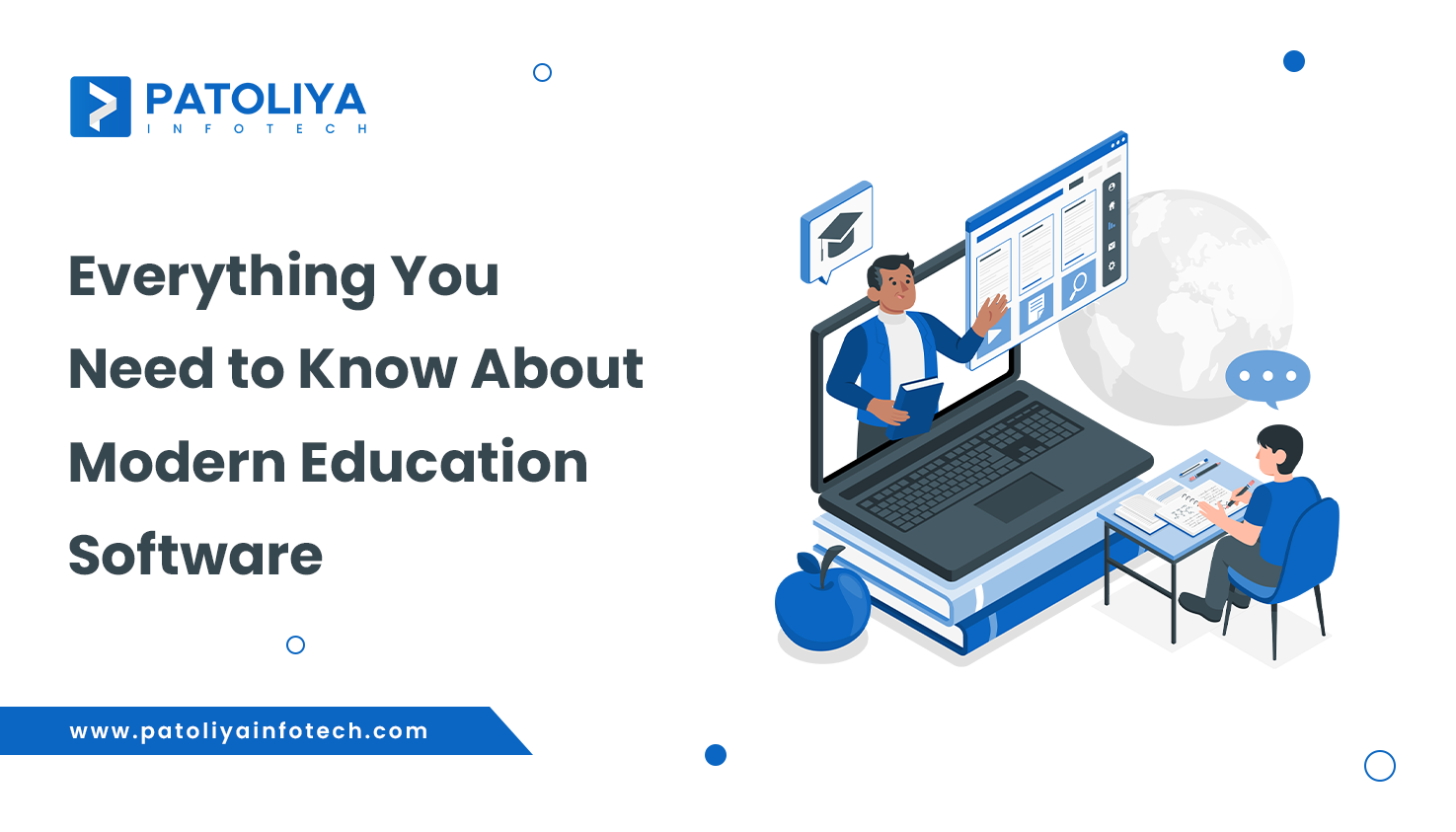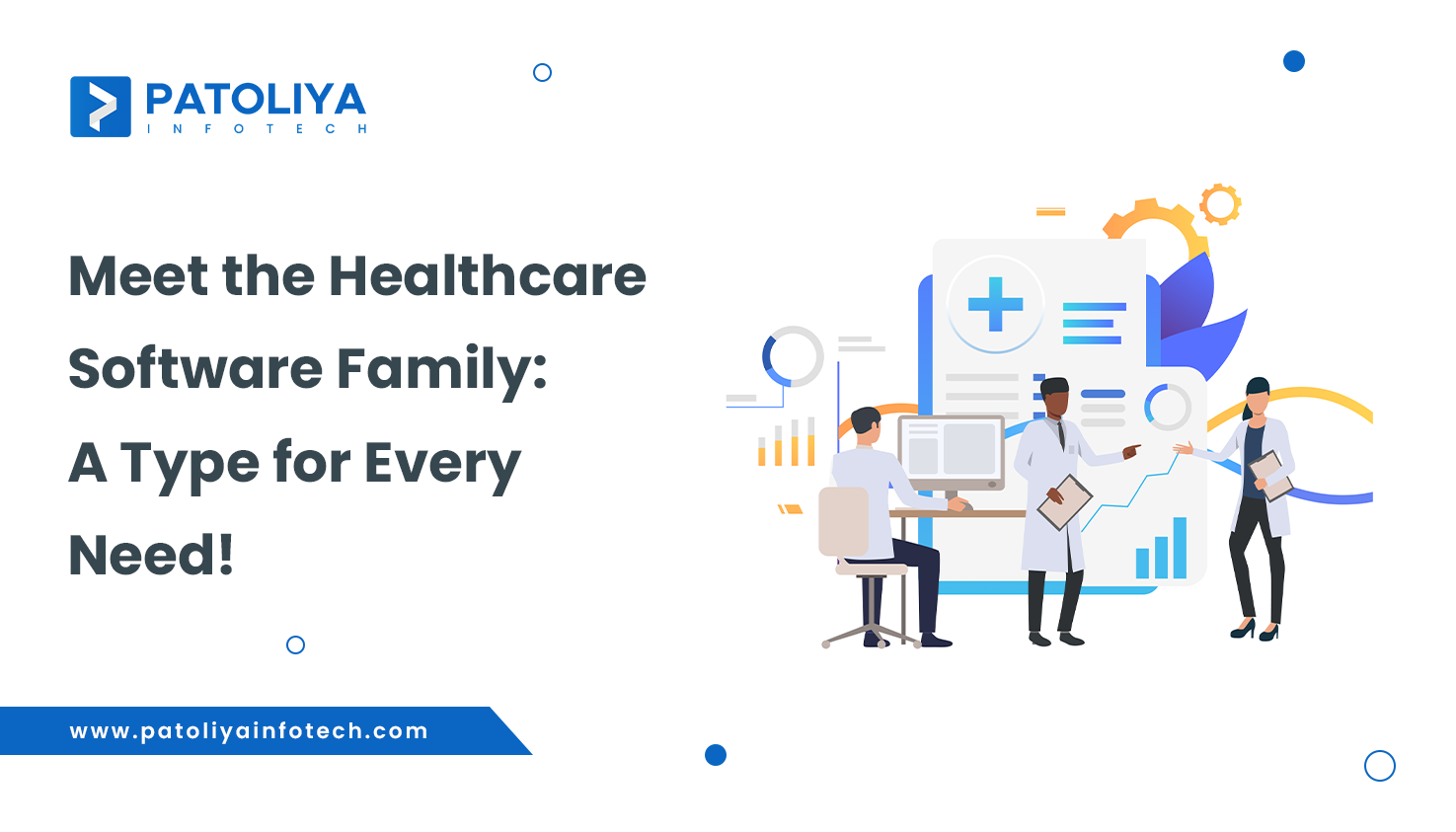The Ultimate Guide to Manufacturing Software: Boosting Efficiency and Growth
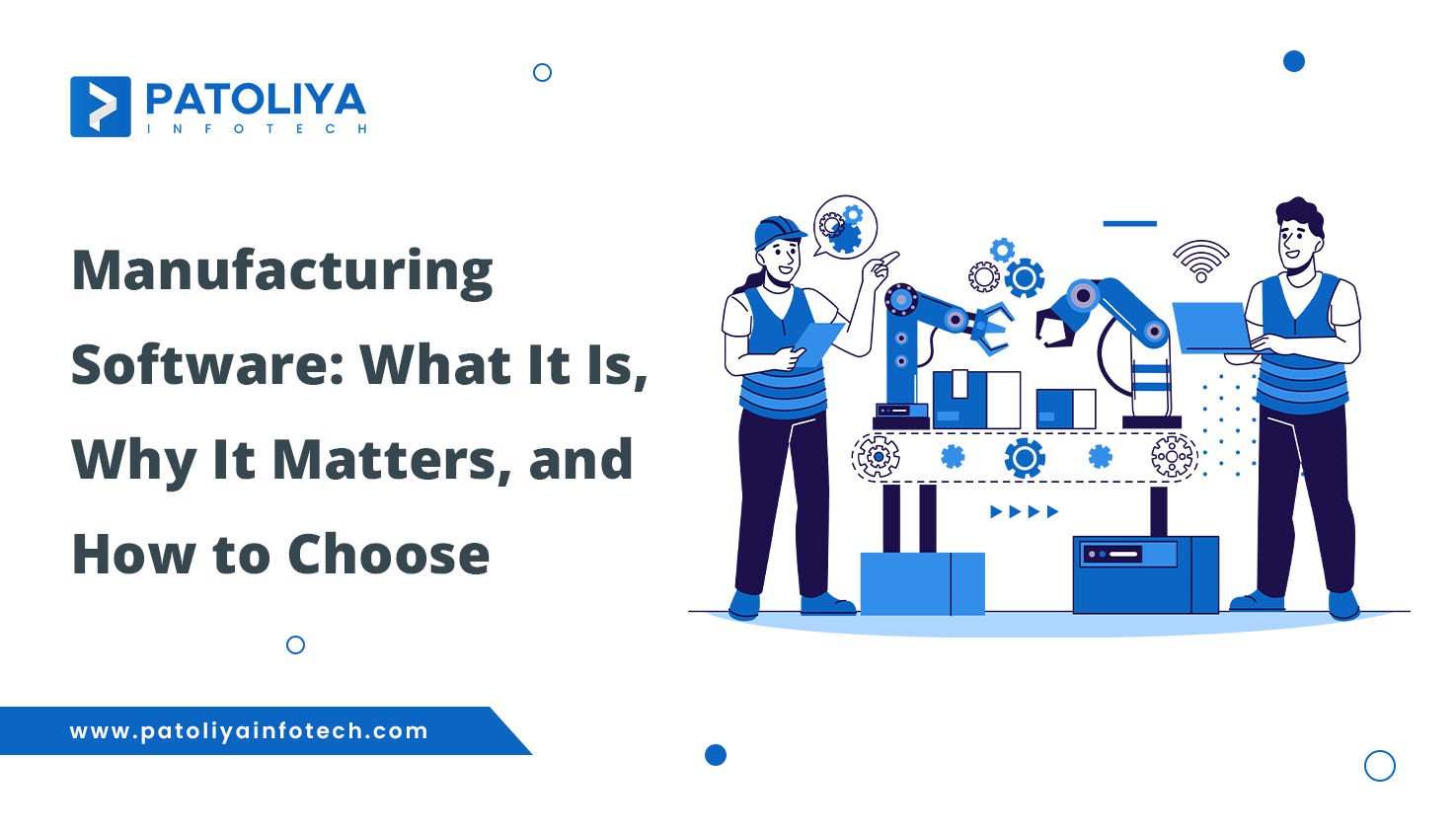
Using the current generation is a strategic necessity rather than only a personal preference. Modern manufacturing software is incredibly effective at transforming intricate, multi-layered production methods into simplified, highly efficient operations.
Every aspect of manufacturing is being revolutionised by this game-changing instrument, from particular stock control and constant great management to careful planning and flexible production.
In order to demonstrate the true potential of the program, we peel back the layers in this comprehensive guide. We examine its vital features and concrete benefits in detail, delve into the complexities of its improvement methodology, and clarify the cost dynamics and deployment options offered in the modern virtual environment.
Whether you're a fast-thinking startup trying to streamline operations or a global organization trying to maintain its competitive edge, this handbook is your key to unlocking a future of sustained growth and higher efficiency.
Prepare yourself for an experience that will help you make smart, well-informed decisions and drive your manufacturing processes to previously unreachable success levels.
What is Manufacturing Software?
Defining Manufacturing Software
Manufacturing software isn't always simply another tool; it's a modern digital platform created to change the way manufacturing facilities operate.
Through the smooth integration of planning, production scheduling, stock management, and superior control, this period unifies all of the key aspects of production into a single system.
With real-time data and sophisticated analytics at its core, production software enables organizations to lower guidance mistakes, enhance departmental communication, and increase overall operational effectiveness.
Why It Matters in Modern Manufacturing
Companies have several obstacles to overcome, such as erratic market needs, complex supplier networks, and high standards. Manufacturing software will impact sports in the following ways:
- Bridging the Gap Between Traditional and Smart Manufacturing:
It helps businesses transition from outdated, traditional methods to more modern, data-driven strategies that improve precision and productivity. It also makes communication easier. - Enabling Agile, Real-Time Decision-Making:
With continuous access to up-to-date operational data, managers can adapt to changing internal dynamics and market situations and make prompt, well-informed choices. - Optimizing Resources for Maximum Efficiency:
Manufacturing software ensures that all assets are used to their maximum capacity by simplifying the allocation of valuable resources, which not only saves waste but also lowers operating costs. - Enhancing Overall Productivity:
Automating repetitive processes and improving workflow coordination result in improved throughput and quicker manufacturing cycles, which support long-term growth in a cutthroat industry.
Adopting the manufacturing software approach will enable businesses to remain ahead of the curve in a constantly changing industrial landscape, introducing a future where performance and era coexist.
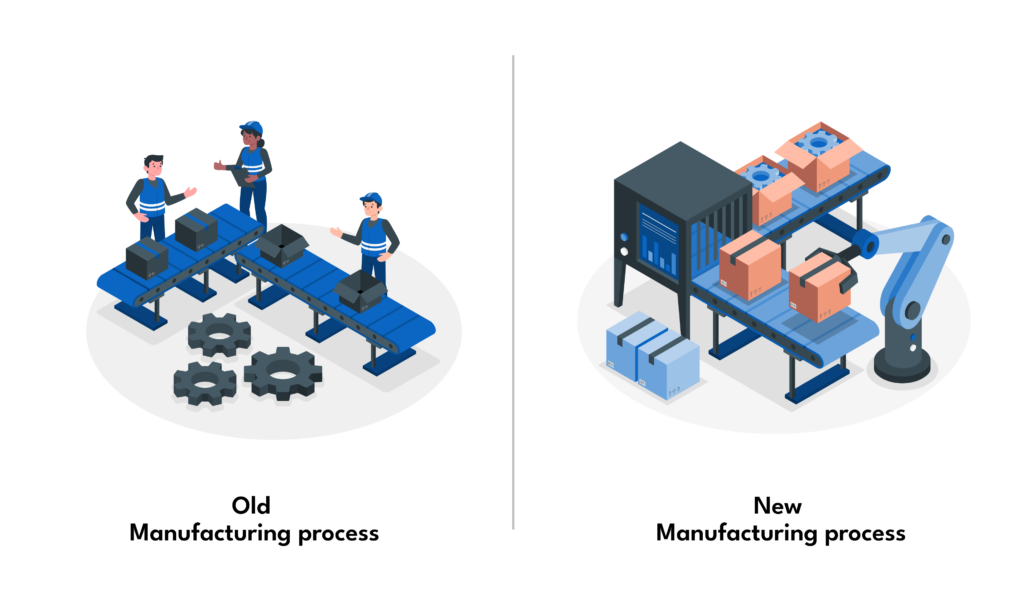
How Manufacturing Software Can Help Your Business
Driving Operational Efficiency
Software for manufacturing improves your business by automating repetitive tasks like scheduling, order processing, and inventory changes.
This level of automation guarantees that each stage of the production process is appropriately regulated for optimal efficiency in addition to reducing human error.
The application provides useful information that enables you to manage resources—such as personnel, materials, or equipment—as effectively as possible. Its core function is sophisticated data analytics.
Enhancing Productivity and Profitability
Tracking in real time is revolutionary for producers. With production software, you can always screen your operations and quickly identify inefficiencies and bottlenecks that might slow down your manufacturing line.
By reducing production cycles and downtime, this real-time input enables your products to reach the market sooner. A more robust production system, lower operating costs, and reduced waste will all boost your profitability right away.
Improving Customer Satisfaction
Industrial software helps companies maintain high standards in a technological environment where success is largely determined by dependability and consistency.
Through stringent quality control and green order processing, the program ensures that your items are not only of the highest caliber but also arrive on schedule.
This degree of consistency gives your business a competitive edge in the industry and builds trust with clients and nurtures connections.
Types of Manufacturing Software
Manufacturing software is a dynamic collection of tools created to enhance every aspect of your manufacturing process; it is not a solution that fits all needs. A deeper look at the main varieties is provided below:
Popular Manufacturing Software Solutions
- ERP (Enterprise Resource Planning) Systems:
Picture a single, cohesive machine that includes all of the key business functions, including supply chain, manufacturing, finance, and human resources. ERP solutions provide a comprehensive picture of your business while streamlining strategies. - MES (Manufacturing Execution Systems):
These solutions guarantee that every stage of your production processes is effective by offering real-time monitoring and control. When it comes to improving workflow efficiency and maintaining operational agility, MES systems are the best option. - PLM (Product Lifecycle Management) Software:
PLM software controls a product's whole lifetime, from the initial idea to the final product introduction. Innovation, development, and market preparation are all supported by it. - QMS (Quality Management Systems):
There is no negotiating quality. In order to maintain product excellence, QMS solutions make sure that all industry standards and legal requirements are followed at every turn.
Is AI the Future of CRM? Learn how AI is reshaping customer management and why integration matters! Read the full guide now!
Industry-Specific vs. Generic Solutions
Your particular business demands will determine which manufacturing software is best for you:
- Industry-Specific Solutions:
These platforms are made especially to satisfy the specialized demands and legal specifications of certain sectors, such as the food and beverage, automotive, pharmaceutical, and other niches. Their characteristics are especially designed to satisfy the demands of your industry. - Generic Solutions:
Generic systems offer a large range of adjustable functions and a flexible base that may be tailored to different business models. They might not, however, have the specialized features included in alternatives tailored to a certain sector.
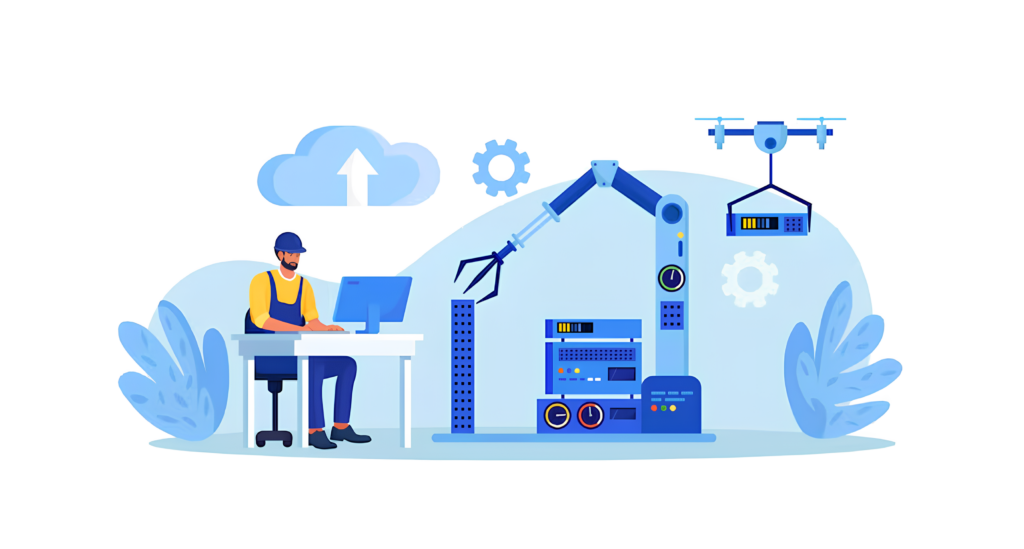
Cloud-Based vs. On-Premise Systems
The way your production software is deployed is equally important since the software itself:
- Cloud-Based Systems:
Using the cloud approach in order to benefit from scalability, remote access, and early cost reduction. Businesses who prioritize flexibility, quick integration, and lower IT costs would benefit most from these platforms. - On-Premise Systems:
For organizations that value total control over data security, on-premise solutions provide a strong option. Even though they need a larger initial investment and dedicated IT resources for continuous upkeep, they provide previously unheard-of data management capabilities.
Key Features of Manufacturing Software
Essential Features for Every Manufacturing Operation
- Real-Time Production Monitoring:
Imagine having an exact, real-time dashboard that closely monitors each stage of your production process. Inefficiencies and skill issues are immediately identified with real-time tracking, enabling prompt intervention and continuous improvement. - Inventory and Supply Chain Tracking:
Bid farewell to delivery hassles and stock surprises. The most advantageous stock levels are ensured by sophisticated tracking mechanisms that also smoothly coordinate supplier contacts. This implies that you always have what you require at the precise moment you desire it. - Quality Control and Compliance Tools:
Automated first-class checks and compliance equipment work relentlessly to sustain organizational standards in a global setting where precision matters. They protect the awareness of your brand and ensure a flawless product production by reducing faults and avoiding costly recalls.
Must-Have Features for Modern Manufacturing
- Predictive Maintenance Capabilities:
Make use of artificial intelligence and data analytics to anticipate equipment issues before they arise. Predictive preservation significantly reduces unplanned downtime and preservation expenses by transforming reactive remedies into proactive solutions. - Integration with IoT and AI Technologies:
Accept a future in which your production processes are more intelligent and integrated. This connection encourages more desired automation throughout your whole business and supports informed decision-making by employing data from linked devices.
Overcoming Operational Hurdles with Manufacturing Software
Tackling Common Manufacturing Challenges
- Inefficient Production Scheduling:
Dealing with misallocated assets and downtime? Often, manufacturing is disrupted by bottlenecks caused by traditional scheduling. - Poor Inventory Management:
Have you ever had to deal with inventory imbalances, whether they are caused by overstocking or running out of essential supplies? Your whole supply chain may be affected by irregular inventory manipulation. - Lack of Real-Time Data Visibility:
Making direct, well-informed decisions can become a guessing game without up-to-date information, which might cost you money and effort.
How Manufacturing Software Transforms These Challenges
- Automated Scheduling and Resource Allocation:
Goodbye to delays. factory software guarantees that every resource is allocated as efficiently as possible by automating factory planning, keeping your operations running smoothly. - Real-Time Analytics:
Imagine being able to make use of insights that are available to you. By using real-time data, you can identify mistakes and implement fast fixes to eliminate bottlenecks before they become issues. - Predictive Maintenance:
Why expect severe system failures? By identifying and resolving capacity issues before they interfere with your manufacturing, predictive protection guarantees a continuous and environmentally friendly operation.
Understanding Manufacturing Software Development
Software development for manufacturing is more than just writing code; it's an organized method that turns business problems into customized, environmentally friendly virtual solutions. This is a comprehensive, step-by-step analysis of how this shift occurs:
1. Requirement Analysis and Planning
The foundation for success is established by this essential stage, which identifies the needs of your business and sets clear, achievable objectives. It comprises:
- Stakeholder Collaboration: Interacting with operators, IT professionals, and decision-makers to comprehend needs and problem issues.
- Scope Definition: Defining the parameters, important aspects, and anticipated results of the project.
- Strategic Roadmapping: Making sure that every step is mapped to provide tangible benefits by developing a thorough strategy that coordinates technology with business objectives.
2. Design and Prototyping
In this creative phase, the vision begins to take shape:
- User-Centric Design: Software adoption is facilitated by the creation of user-friendly interfaces that match actual global manufacturing processes.
- Prototyping: Constructing interactive styles that enable stakeholders to provide early comments and see functioning.
- Iterative Refinement: Designs are always being improved to exactly match operational needs, setting the stage for a flawless customer experience.
3. Development and Testing
This is where the robust foundation is built and refined:
- Agile Development: Building the product repeatedly through the use of iterative coding techniques ensures flexibility and quick variations to changes.
- Rigorous Testing: Establishing thorough testing procedures, such as unit tests and complete device integrations, to confirm overall performance, dependability, and adherence to industry standards.
- Quality Assurance: The product is continuously improved to fix flaws and ensure that every feature works well in international, real-world situations.
4. Deployment and Maintenance
The final phase is just the beginning of a long-term journey:
- Smooth Deployment: introducing the software application into your production system in a way that will cause the least amount of disturbance to current activities.
- Ongoing Support: Offering daily updates, performance tracking, and thorough publish-deployment assistance.
- Continuous Improvement: Making sure your response is updated and trustworthy over time by leveraging software enhancements to satisfy changing company needs and industry advancements.
Cost of Manufacturing Software Development
Purchasing software for production is an investment in productivity, expandability, and creativity. On the other hand, knowing the financial commitment required is important for matching your generation strategy with your business objectives. This article provides a thorough analysis of the variables that affect improvement costs and what you may rely on when making investments in accordance with your organization's preferences.
- Complexity of Features:
Better financing is associated with more advanced features that you need. Advanced features, such as real-time analytics, AI-powered predictive maintenance, and smooth custom connections with older systems, need specialist knowledge and a significant amount of development time. Every layer of complexity increases the amount of time and money needed to get a solid response. - Choice of Deployment:
Your deployment strategy has an important effect on the value. In addition to lower upfront costs, solutions that are specifically cloud-based frequently provide scalability, flexibility, and a simpler reference to various modern structures. On the other hand, on-premise solutions need substantial initial expenses for hardware, infrastructure, and ongoing IT support, which might raise the overall cost. - Integration with Existing Systems:
It is necessary to make sure your new production software is suitable with your current gear and software. Custom integration work, compatibility testing, and maybe even legacy system redesign might be added to the overall cost. The intricacy of your present IT ecosystem directly affects the level of integration that is necessary. - Ongoing Maintenance and Upgrades:
Consider the long-term costs of maintenance, security updates, and improvements to features in addition to the original development. Although a carefully planned protection strategy guarantees the software's sustainability, it does require continuous financing.
IT services are reshaping industries! Discover the latest trends, innovations, and game-changing strategies driving digital transformation. Read now!
How to Choose the Right Manufacturing Software Development Company
Choosing the best development partner is a strategic move that has the potential to revolutionize your manufacturing processes, not just a vendor choice. Here are some tips for finding a partner that not only fulfills but also beyond your expectations:
Key Factors to Consider
- Industry Experience and Expertise:
Seek out businesses that provide many different kinds of fun using producing software. They document how they understand the complexities of your business and can customize solutions to meet your unique demanding needs. - Portfolio of Successful Projects:
An impressive portfolio says a lot. Examine their prior work to see whether they have offered solid, scalable solutions that complement your operational goals. Their success stories might serve as a powerful indicator of your future success. - Client Reviews and Testimonials:
Focus on their clients instead than taking their word for it. Sincere comments on their universal performance, guide capabilities, and supplier quality will give you an idea of what it's like to paint with them.

Questions to Ask Potential Vendors
- Customization:
Pay attention to their consumers instead of just taking their word for it. Sincere comments on their universal performance, guiding capabilities, and supplier quality will give you an idea of what it's like to paint with them. - Post-Deployment Support:
What happens after release? Make sure they provide a comprehensive post-deployment guide that covers refurbishment, daily updates, and proactive troubleshooting to guarantee your operations remain functional for a long time after deployment. - Industry-Specific Solutions:
Are they prepared to manage the minute details of your quarter? Verify whether they provide industry-specific solutions made to meet the exacting requirements and challenging circumstances in your region.
Cloud vs. On-Premise Deployment: Future-Proofing Your Tech Stack
Making the strategic choice to choose the appropriate deployment version might affect your employer's long-term viability and agility. We will look at the distinct benefits and real risks of both on-premises and cloud-based solutions so that you can make an informed decision.
Cloud-Based Solutions
Pros:
- Scalability: Transfer enterprise wishes with ease and without requiring significant cost outlays.
- Lower Upfront Costs: Profit from a subscription-based, all-inclusive strategy that lowers upfront expenses.
- Remote Accessibility: Allow your team to collaborate and access data from any location.
- Simplified Updates: Benefit from automatic updates that require little difficulty to keep your system current.
Cons:
- Internet Dependency: Reliable connectivity is a must since any interruption might potentially impact access.
- Data Security Concerns: Additionally, storing sensitive data off-site might cause security and compliance problems, especially for companies with rigorous policies.
On-Premise Solutions
Pros:
- Complete Data Control: For safety and compliance, it is essential to have complete control on your facts.
- Enhanced Security: Make safety procedures unique to your employer's needs.
- Extensive Customization: Personalize your device to meet specific organizational needs and operational requirements.
Cons:
- Higher Initial Investment: Requires a substantial initial outlay of funds for infrastructure.
- Complex Maintenance: Ongoing IT improvements, protection, and assistance can be required.
Which is Right for Your Business?
Make a choice that fits your development position, security requirements, and budget:
- Cloud Solutions: Perfect for teams wanting flexibility, quick scaling, and lower upfront costs. They function well if you value remote access and simplicity of maintenance.
- On-Premise Solutions: Ideal for teams that need a lot of customisation and strict fact management. This choice is particularly attractive if you have the funds to invest in a robust IT infrastructure and are capable of handling continuing upkeep.
Time is money—don’t let outdated logistics slow you down! Learn why adopting logistics software is critical for business growth. Find out now!
The Advantages of Sourcing Manufacturing Solutions from a Single Vendor
Streamlined Integration
When you choose an single provider, you're creating a seamless ecosystem where everything works together:
- Seamless Compatibility:
Since all of the modules are made to work together, there is a far lower chance of device conflicts and a more seamless, cohesive operation. - Elimination of Data Silos:
Take advantage of an individual information flow that breaks down departmental boundaries and gives you thorough insights and more informed decision-making.
Cost and Time Efficiency
It is not only more intelligent, but also more cost-effective and quicker to deploy a single-vendor solution:
- Reduced Integration Costs:
Avoiding the difficulties of integrating many systems allows you to optimize your budget allocation and drastically reduce integration costs. - Faster Implementation: All components are managed by a single vendor, making deployment simple and resulting in quick acceptance, a shorter time to market, and a higher return on investment.
Consistent Support and Updates
Reliability and consistency are key:
- Single Point of Contact:
Simplify communication and troubleshooting with a committed guide group, guaranteeing prompt resolution of issues and consistent, outstanding service. - Regular Software Updates:
Regular upgrades that guarantee all elements are updated, optimized for overall performance, and prepared to meet changing challenges will keep your system reliable and up to date.
Opt for Industry-Specific Software Instead of Generic Systems
Why Industry-Specific Solutions Matter
Generic software can sometimes come up short when it comes to resolving the unique issues facing your sector. On the other hand, industry-specific software is carefully designed to satisfy the business requirements and legal requirements of your region. Here's why these specialized responses are so different:
- Customized Workflows:
Customized to the specifics of your sector, this software is made to work in harmony with your current workflows, increasing productivity and efficiency while perfectly coordinating with your operational desires. - Regulatory Compliance:
Every sector has a unique set of regulatory demands. Industry-specific solutions are designed to meet these exacting standards, ensuring that you maintain compliance without having to modify standard systems. - Enhanced Functionality:
These solutions offer features that are greatly more relevant and effective than those available in general, generic systems, thanks to customized tools designed to meet the particular issues of your profession.
Examples of Industry-Specific Software
- Automotive Manufacturing Solutions:
Use software that automates every step, from factory scheduling to superior warranties, to manage complex supply chains and maintain strict nice controls, guaranteeing optimal performance across your business. - Food and Beverage Production Tools:
With the help of these technologies, you can ensure that your products meet high safety requirements, manage quick manufacturing cycles, and maintain strict compliance in a fast-paced industry where protection and efficiency are critical. - Pharmaceutical Manufacturing Systems:
Accuracy and adherence to rules are crucial when it comes to prescription drugs. In addition to enhancing output, these systems provide strong monitoring and control features that ensure adherence to FDA and other regulatory requirements.
Conclusion
Manufacturing software is a cutting-edge strategic asset that has the power to completely change the way your business operates. It is more than just a gadget. With the help of automated strategies, real-time information, and smooth integration across all areas, your agency may achieve levels that were previously beyond reach of productivity, satisfaction, and profitability.
Whether you choose with the strength of an on-premise device or the capability of a cloud-based solution, the right software might be the spark for long-term growth and keep you ahead of the curve in today's fast-paced business environment.
The manufacturing software program application terrain has been covered, from its crucial definition and benefits to the intricate details of its development and execution. With this comprehensive and helpful resource at your disposal, you can now make well-informed decisions that align with your agency's objectives.
To increase productivity, improve strategy, and provide high-quality products to your consumers, embrace the power of software development to secure a competitive position in the modern business climate.

